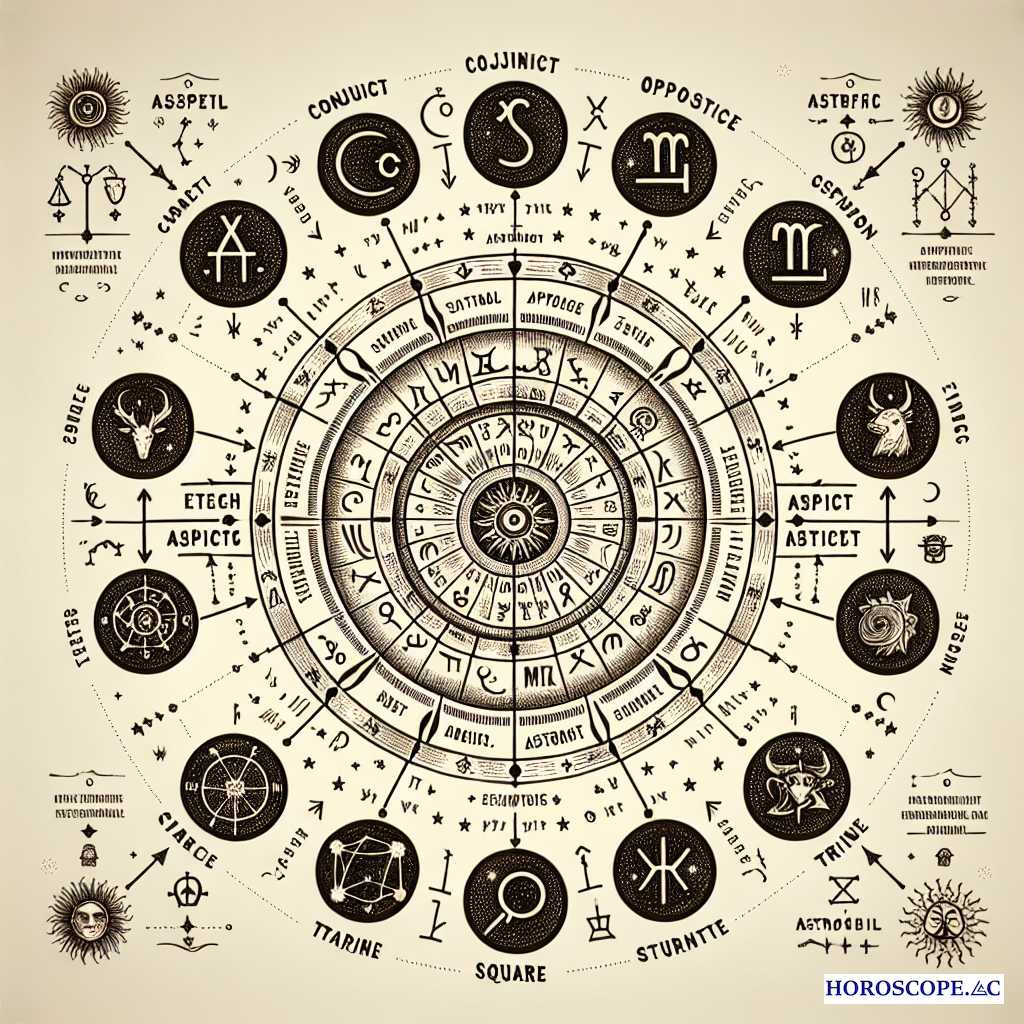Definition of Each Aspect in Astrology

Astrology is a fascinating discipline that explores the relationships between celestial bodies and our daily lives. One of the essential elements of this practice is the study of aspects, which are the angles formed between planets in a natal chart. These aspects reveal particular dynamics that influence our personality, behaviors, and life experiences. In this article, we will explore the main aspects in astrology and their meanings.
## 1. Conjunction (0°)
A conjunction occurs when two planets are very close to each other, typically within an orb of 0 to 10 degrees. This aspect intensifies the energy of the involved planets and creates a synergy between their meanings. For example, a conjunction between Venus and Mars can evoke intense passion and strong romantic attraction.
## 2. Opposition (180°)
An opposition forms when two planets are directly opposite each other in the zodiac. This aspect can create tensions and conflicts, but also opportunities for personal growth. Oppositions often invite us to find a balance between opposing forces. For example, an opposition between the Sun and the Moon may symbolize a conflict between the conscious self and the emotional self.
## 3. Square (90°)
The square is a tense aspect that occurs when two planets form a 90-degree angle. This aspect represents challenges and obstacles, often prompting action and transformation. Squares can be sources of frustration, but they also present opportunities to overcome limitations. For example, a square between Mercury and Saturn may indicate communication difficulties.
## 4. Trine (120°)
The trine is a harmonious aspect that occurs when two planets are separated by 120 degrees. This aspect promotes cooperation and fluidity, allowing for the beneficial use of the energies of the involved planets. A trine between Jupiter and the Sun, for instance, can evoke luck, optimism, and natural success.
## 5. Sextile (60°)
The sextile is another harmonious aspect, formed when two planets are 60 degrees apart. This aspect is often associated with opportunities and natural talents. Sextiles encourage collaboration and the positive use of planetary energies. A sextile between Venus and Uranus may suggest innovative and surprising relationships.
## 6. Quincunx (150°)
The quincunx, or inconjunction, occurs when two planets form a 150-degree angle. This aspect represents imbalance and may require necessary adjustments. Quincunxes can signal situations that are difficult to understand but demand adaptation and flexibility. For example, a quincunx between Mars and Pluto may indicate power struggles.
## 7. Semi-square (45°)
The semi-square, which forms at 45 degrees, is a moderate tension aspect. It indicates frustrations and obstacles that require particular attention. Semi-squares can also suggest internal conflicts. For example, a semi-square between the Sun and Neptune may lead to doubts about personal identity.
## 8. Sesquiquadrate (135°)
The sesquiquadrate, or derived square, forms at 135 degrees. Like the semi-square, this aspect suggests tensions, but with a slightly higher intensity. Sesquiquadrates can signal internal struggles or conflicts with others, often related to elements of personality that require awareness.
## Conclusion
Aspects in astrology play a crucial role in interpreting natal charts. Each one brings a unique nuance to the interactions between planets, thus influencing our personality and life experiences. By understanding these dynamics, we can better navigate our personal journeys and harness the energies that surround us. Whether you are a novice or an experienced practitioner, studying aspects can enrich your understanding of yourself and the world around you.
Similar Articles in This Category
- The Transit of Jupiter and Its Promises for the New Year
- How to Align Your Resolutions with Planetary Cycles
- Astrological Forecasts for the New Year: A Look at the 12 Zodiac Signs
- New Year, New Transits: Anticipating the Major Planetary Energies
- The Best Resolutions According to Your Zodiac Sign
← Return to Category Reference


